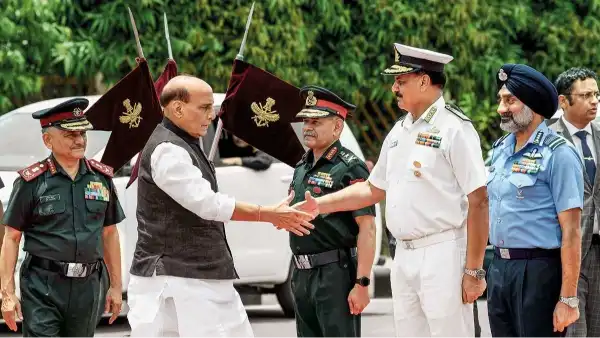India is moving ahead with plans to establish theatre commands to integrate the Army, Navy, and Air Force under unified operational control, a reform first highlighted by Prime Minister Narendra Modi in 2019. This initiative aims to address coordination gaps and improve operational efficiency through measures like standardised equipment, joint training, and common logistics systems.
What Theatreisation Means
The theatreisation plan will merge resources from the three services into specific theatre commands, each assigned a geographical area and overseen by a single operational commander. This approach ensures that troops, aircraft, and naval assets can operate cohesively under one command structure rather than in parallel.

Early Steps and Institutional Framework
In 2019, the Union Cabinet approved the creation of the Chief of Defence Staff (CDS) post, a four-star general who also serves as the secretary of the Department of Military Affairs (DMA). Over the years, steps like standardising supply chains, integrating maintenance facilities, conducting joint training, and cross-posting personnel have laid the groundwork for theatre commands. Currently, the Army and Air Force have seven commands each, and the Navy has three, with two tri-service commands—the Andaman and Nicobar Command and the Strategic Forces Command—already operational.
Lessons from Past Operations
The need for unified commands has been highlighted in operations such as the Balakot air strikes of 2019, where the Air Force, Army, and Navy acted in parallel rather than in a fully integrated manner. While each service performed effectively, lack of cohesion meant opportunities for coordinated action were limited. Theatre commands are designed to prevent such gaps in future operations.
Legal and Structural Changes
The Inter-Services Organisations (Command, Control and Discipline) Act, 2023 gives commanders of tri-service organisations authority over personnel from all three services. This legal framework ensures coordinated action during operations and will extend to future theatre commands. Defence Minister Rajnath Singh has confirmed that progress is being made, with consensus emerging among the three services.
Steps to Foster Integration
Several measures are underway to promote jointness and a shared culture among the services. These include:
- Standardising equipment and platforms for interoperability
- Integrating repair and maintenance for shared systems like Apache helicopters, ALH Dhruv, and AK-203 rifles
- Expanding tri-service communication networks for seamless data-sharing
- Harmonising service-specific customs and traditions
- Creating opportunities for social interactions and joint training
- Establishing a single tri-services Education Corps and three joint military stations in Thiruvananthapuram, Visakhapatnam, and Gandhinagar
Diverse Views on Implementation
While Defence Minister Rajnath Singh and service chiefs acknowledge the importance of theatre commands, some voices, including Air Chief Marshal A P Singh, urge caution. He has suggested a joint planning and coordination centre in Delhi to ensure proper synergy before full implementation. Army Chief General Upendra Dwivedi and Navy Chief Admiral Dinesh Kumar Tripathi, however, see theatreisation as inevitable.
Strategic Necessity
Experts emphasize that integrated commands are critical to addressing threats from Pakistan and China. Retired officers point out that adversaries have already developed multi-domain, joint operations, whereas India still largely operates in service-specific silos. The DMA is planning over 150 initiatives to create a joint culture and work ethic, including integrating standard operating procedures and maintenance facilities across services. Planned theatre commands include a Western Theatre at Jaipur, a Northern Theatre at Lucknow, and a Maritime Theatre Command in Thiruvananthapuram to cover maritime borders.
